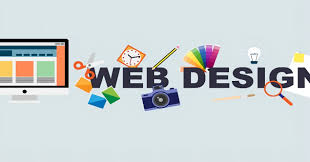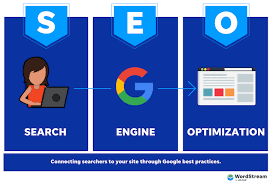Web designers are the unsung heroes of the digital age. They are the ones who work tirelessly behind the scenes to create beautiful and functional websites that we use every day. From e-commerce sites to social media platforms, web designers are responsible for designing and building the online spaces that we interact with on a daily basis.
So, what exactly do web designers do? At its core, web design is all about creating a user-friendly and visually appealing website. This involves a range of skills, including graphic design, coding, and user experience (UX) design. Web designers must have an eye for detail and be able to balance aesthetics with functionality.
One of the key challenges facing web designers is keeping up with technological advancements. As new devices and platforms emerge, web designers must adapt their designs to ensure they look great on any screen size or device type. This requires a deep understanding of responsive design principles and an ability to stay up-to-date with the latest trends in technology.
Another important aspect of web design is usability testing. Web designers must ensure that their websites are easy to navigate and intuitive for users. This involves conducting user testing sessions to gather feedback on the site’s layout, navigation, and overall user experience.
Ultimately, web designers play a critical role in shaping our online experiences. By creating beautiful and functional websites, they help us connect with others, find information quickly, and enjoy seamless online experiences. Their work may often go unnoticed by users who take these sites for granted, but their contributions are essential in making our digital world more accessible and enjoyable for everyone.
If you’re interested in pursuing a career in web design, there are many resources available to help you get started. From online courses to community college programs, there are plenty of opportunities to learn the skills you need to become a successful web designer. With dedication and hard work, you too can join the ranks of these talented professionals who make our digital world come alive.
7 Essential Tips for Successful Web Design: Staying Ahead of Trends, Prioritizing User Experience, and Utilizing Tools and Techniques
- Research the latest web design trends and techniques to stay ahead of the curve.
- Make sure your designs are intuitive and user-friendly.
- Pay attention to details, like typography, color, and layout, to create a visually appealing website.
- Test your designs on multiple platforms and devices to ensure compatibility across browsers and devices.
- Use high-quality images that are optimized for fast loading times on websites.
- Utilize design tools such as Adobe Photoshop or Sketch for creating mockups or prototypes of your designs before coding them into HTML/CSS or other languages used in web development projects .
- Take advantage of frameworks like Bootstrap or Foundation for rapid prototyping and development of responsive websites quickly and efficiently
Research the latest web design trends and techniques to stay ahead of the curve.
As technology continues to evolve at a rapid pace, it’s essential for web designers to stay up-to-date with the latest trends and techniques. By doing so, they can create websites that are not only visually appealing but also functional and user-friendly.
One of the best ways for web designers to stay ahead of the curve is by conducting regular research into the latest web design trends. This involves keeping up-to-date with popular design styles, color schemes, typography, and other design elements that are currently in vogue.
In addition to following current trends, web designers should also be aware of emerging technologies and techniques. For example, responsive design has become increasingly important as more people access websites on mobile devices. By staying on top of these developments, designers can ensure that their websites are optimized for all types of devices and screen sizes.
Another way to stay ahead of the curve is by attending industry conferences and events. These events provide an opportunity for designers to network with peers and learn about new technologies and techniques firsthand.
Ultimately, staying ahead of the curve is essential for web designers who want to remain competitive in today’s fast-paced digital landscape. By conducting regular research into the latest trends and techniques, attending industry events, and keeping up-to-date with emerging technologies, designers can create websites that are both visually stunning and highly functional.
Make sure your designs are intuitive and user-friendly.
As a web designer, one of the most important things to keep in mind is user experience. Your designs should be intuitive and user-friendly, meaning that visitors to your website should be able to easily navigate and find the information they need.
To achieve this, it’s important to put yourself in the shoes of your users. Think about what they are looking for and how they might go about finding it on your site. Use clear and concise language, and organize your content in a logical manner.
Another key aspect of user-friendly design is consistency. Make sure that all of the pages on your site have a similar layout and design, so that users can quickly orient themselves no matter where they are on the site. This includes using consistent navigation menus, fonts, colors, and other design elements.
Finally, don’t forget about accessibility. Your website should be designed with all users in mind, including those with disabilities or who use assistive technologies to access the web. This means using alt tags for images, providing captions for videos, and ensuring that all content can be accessed via keyboard navigation.
By keeping these tips in mind as you design your website, you can create an intuitive and user-friendly experience for all visitors. Not only will this make your site more enjoyable to use, but it can also help improve engagement and drive conversions in the long run.
Pay attention to details, like typography, color, and layout, to create a visually appealing website.
When it comes to web design, paying attention to details is essential. From typography to color choices and layout, every aspect of a website’s design can have a significant impact on how it is perceived by users. A visually appealing website can help attract and retain visitors, while a poorly designed one can turn them away.
One important detail to consider is typography. The font choice and size can affect readability and the overall tone of the website. A clean and easy-to-read font can make the content more accessible to users, while a unique or stylized font may add personality but could be harder to read.
Color choices are also crucial in web design. Colors can evoke emotions and create an atmosphere that aligns with the website’s purpose and content. For example, blue is often associated with trustworthiness and professionalism, while red can evoke passion or urgency.
Finally, layout plays a critical role in creating an aesthetically pleasing website. The way content is organized on the page can affect user engagement and navigation. A well-designed layout should be intuitive, with clear visual cues directing users where they need to go.
Overall, paying attention to details like typography, color, and layout can help create a visually appealing website that engages users and encourages them to explore further. By taking the time to carefully consider these elements during the design process, web designers can create websites that stand out from the competition and leave a lasting impression on users.
Test your designs on multiple platforms and devices to ensure compatibility across browsers and devices.
As a web designer, one of the most important things you can do is to test your designs on multiple platforms and devices. With so many different browsers and device types available today, it’s essential to ensure that your website looks and functions great no matter how it’s accessed.
Compatibility issues can arise when a website is viewed on different devices or browsers. For example, a site that looks great on a desktop computer may not translate well to a mobile device, or it may have issues when viewed in certain browsers. These compatibility issues can lead to frustrated users who may abandon the site altogether.
To avoid this, web designers should test their designs across multiple platforms and devices. This can include testing on various desktop and mobile browsers, as well as different screen sizes and resolutions. By doing so, you can identify any compatibility issues early on in the development process and make adjustments as needed.
There are many tools available to help with testing website compatibility. Some popular options include browser emulators, which allow you to simulate how your site will look and function on different devices and browsers, as well as responsive design testing tools that let you preview your site at various screen sizes.
By taking the time to test your designs on multiple platforms and devices, you can ensure that your website looks great no matter how it’s accessed. This not only improves the user experience but also helps to establish trust with your audience by demonstrating that you take their needs seriously. So don’t overlook this critical step in the web design process – take the time to test your designs thoroughly before launching your site!
Use high-quality images that are optimized for fast loading times on websites.
When it comes to designing a website, using high-quality images can make a huge difference in the overall look and feel of the site. However, it’s important to remember that not all images are created equal. If your images are too large or not optimized for web use, they can slow down your website’s loading times and negatively impact the user experience.
That’s why it’s essential for web designers to use high-quality images that are optimized for fast loading times on websites. This means choosing images with a smaller file size without sacrificing quality. There are several tools available online that can help you optimize your images for web use, such as Adobe Photoshop or online compression tools like TinyPNG.
By using optimized images, you can ensure that your website loads quickly and smoothly for users across all devices and platforms. This is especially important in today’s fast-paced digital world where users expect instant access to information and content.
In addition to optimizing your images, there are other steps you can take to improve your website’s loading times. These include minimizing the use of large files like videos or animations, using caching plugins, and minimizing the number of HTTP requests on each page.
Ultimately, by taking the time to optimize your website’s images and overall performance, you can create a better user experience and improve engagement with your audience. So next time you’re designing a website, remember to prioritize image optimization for fast loading times and optimal user experience.
Utilize design tools such as Adobe Photoshop or Sketch for creating mockups or prototypes of your designs before coding them into HTML/CSS or other languages used in web development projects .
As a web designer, one of the most important steps in your workflow is creating mockups or prototypes of your designs before diving into the coding stage. This allows you to visualize your design concepts and ensure that they meet the needs of your clients or users.
To create these mockups or prototypes, it’s important to utilize design tools such as Adobe Photoshop or Sketch. These tools allow you to create detailed visuals of your designs, including layout, colors, typography, and more. You can experiment with different design elements and make changes quickly and easily.
By using these design tools, you can save time and resources by identifying potential issues early on in the design process. This helps you avoid costly mistakes down the line when coding your designs into HTML/CSS or other languages used in web development projects.
In addition to saving time and resources, utilizing design tools also helps you communicate your ideas more effectively with clients or team members. By presenting them with a visual representation of your designs, they can better understand your vision and provide feedback to improve the final product.
Overall, incorporating design tools such as Adobe Photoshop or Sketch into your workflow is an essential step for any web designer. It allows you to create effective designs that meet the needs of both clients and users while saving time and resources along the way.
Take advantage of frameworks like Bootstrap or Foundation for rapid prototyping and development of responsive websites quickly and efficiently
Web designers are always looking for ways to streamline their workflow and create beautiful, functional websites in less time. One way to do this is by taking advantage of frameworks like Bootstrap or Foundation.
These frameworks provide a set of pre-designed HTML, CSS, and JavaScript components that can be easily customized to fit the needs of your project. They are designed with responsive web design in mind, which means that they automatically adjust to different screen sizes and device types.
By using a framework like Bootstrap or Foundation, web designers can save time and effort by not having to create everything from scratch. Instead, they can focus on customizing these pre-designed components to fit the specific needs of their project.
In addition, frameworks like Bootstrap and Foundation are well-documented and have large communities of developers who contribute new features and bug fixes. This means that web designers can take advantage of the latest web design trends and techniques without having to reinvent the wheel.
Overall, taking advantage of frameworks like Bootstrap or Foundation is a great way for web designers to speed up their workflow and create responsive websites quickly and efficiently. By using these tools, designers can focus on creating beautiful designs that engage users without getting bogged down in the technical details of coding every component from scratch.




